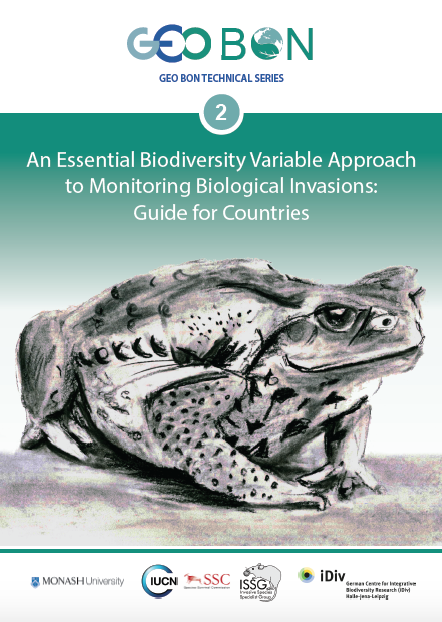Click here to access the website.
Click here to download the Technical Report.
There is currently no global, systematic evaluation and monitoring process in place for invasive alien species. This is despite the fact that they pose a great risk to the environment and economies. Also, the variables and measures for monitoring invasions in a standardised way – needed to underpin a robust observation system – have until now not been fully developed or adopted. Here we present the essential variables and a modular approach for global monitoring of biological invasions.
There is a key set of measurements, or essential variables, that are needed to monitor biological invasions. These include (1) alien species occurrence, the (2) alien status of a species and the (3) impact that a species has on biodiversity and ecosystems (McGeoch et al., 2015; GEO BON, 2015). Some of these data must be provided by countries themselves, whereas a wealth of additional supporting information is available from elsewhere to support national and global monitoring efforts (GEO BON, 2015). Together these essential variables provide the minimum information set needed to assess and track the status of biological invasion (McGeoch et al., 2015; GEO BON, 2015). This will enable countries with a range of baseline data adequacies and capacities to report on the status of biological invasions and to work towards achieving Aichi Target 9 of The Convention on Biological Diversity’s Strategic Plan for Biodiversity, 2011-2020.
The essential variables for invasion monitoring fit within the broader framework of Essential Biodiversity Variables (EBVs). EBVs are the “measurements required for the study, reporting, and management of biodiversity change” (Pereira et al., 2013). The EBV framework underpins the development of a global system of harmonized observations on biodiversity change. Similarly, essential variables for invasion monitoring underpin the development of a global system of harmonised observations to assess and track the status of biological invasion (McGeoch et al., 2006; McGeoch et al., 2010; McGeoch and Latombe, 2015).
PROJECT BACKGROUND
Invasive alien species are second only to habitat transformation in documented severity of impacts on biodiversity. The recent IPCC 5th Assessment Report acknowledges that species movements beyond their historic distributions will continue, driven largely by increased volumes of trade and increasingly complex trade routes. In many cases invasion and climate change interact to increase the likelihood of the establishment, growth, spread and survival of species. Monitoring species movements and geography is therefore essential for understanding and tracking global change consequences. – Click here to Read More
References and links
McGeoch, M. A., Pyšek, P., Jeschke, J. M., Blackburn, T. M., Bacher, S., Capinha, C., Costello, M. J., Fernández, M., Gregory, R. D., Hobern, D., Hui, C., Jetz, W., Kumschick, S., Latombe, G., Pergl, J., Roy, H. E., Scalera, R., Squires, Z. E., Wilson, J. R. U., Winter, M. and Genovesi, P. (in review) A vision for global monitoring of biological invasions.


